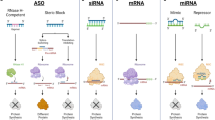Abstract
OBJECTIVE: The investigation of the association between retinol-binding protein 4 (RBP4) and lipoproteins in subjects with hypertriglyceridemia. DESIGN: Forty-six obese or overweight hypertriglyceridemic patients were studied at baseline and 20 of them underwent a hypocaloric low-fat diet for 3 months. RESULTS: Plasma RBP4 levels were positively correlated with serum triglycerides (TG) in the subgroup of patients with TG <200 mg/dL (r=0.453, p=0.039) and negatively correlated with TG in patients with TG ≥200 mg/dL (r=−0.487, p=0.019). In the subgroup with TG <200 mg/dL, subjects with circulating RBP4 above the median 46 mg/L had higher levels of intermediate density lipoprotein-cholesterol (IDL-C), low-density lipoprotein-cholesterol (LDL-C) and apolipoprotein B (ApoB), while these differences were absent in patients with TG ≥200 mg/dL. The associations of percentage changes of circulating RBP4 with the percentage changes of LDL-C, very low-density lipoprotein-cholesterol (VLDL-C) and ApoB were positive after the first month and 3 months of diet for patients with baseline TG <200 mg/dL, while no correlations existed for patients with TG ≥200 mg/dL. CONCLUSIONS: The positive association between circulating RBP4 and ApoB-containing lipoproteins in a steady metabolic state, as well as during a hypocaloric diet, appears to be attenuated in patients with very high TG.
Similar content being viewed by others
References
Christou GA, Tselepis AD, Kiortsis DN, 2012 The metabolic role of retinol binding protein 4: an update. Horm Metab Res 44: 6–14.
Yang Q, Graham TE, Mody N, et al, 2005 Serum retinol binding protein 4 contributes to insulin resistance in obesity and type 2 diabetes. Nature 436: 356–362.
Sun Q, Kiernan UA, Shi L, et al, 2013 Plasma retinol-binding protein 4 (RBP4) levels and risk of coronary heart disease: a prospective analysis among women in the nurses’ health study. Circulation 127: 1938–1947.
Lambadiari V, Kadoglou NP, Stasinos V, et al. 2014 Serum levels of retinol-binding protein-4 are associated with the presence and severity of coronary artery disease. Cardiovasc Diabetol 13: 121.
Liu Y, Wang D, Chen H, Xia M, 2015 Circulating retinol binding protein 4 is associated with coronary lesion severity of patients with coronary artery disease. Atherosclerosis 238: 45–51.
Wan K, Zhao J, Deng Y, et al, 2014 A genetic polymorphism in RBP4 is associated with coronary artery disease. Int J Mol Sci 15: 22309–22319.
Klöting N, Graham TE, Berndt J, et al, 2007 Serum retinol-binding protein is more highly expressed in visceral than in subcutaneous adipose tissue and is a marker of intra-abdominal fat mass. Cell Metab 6: 79–87.
Ingelsson E, Sundström J, Melhus H, et al, 2009 Circulating retinol-binding protein 4, cardiovascular risk factors and prevalent cardiovascular disease in elderly. Atherosclerosis 206: 239–244.
Tan Y, Sun LQ, Kamal MA, Wang X, Seale JP, Qu X, 2011 Suppression of retinol-binding protein 4 with RNA oligonucleotide prevents high-fat diet-induced metabolic syndrome and non-alcoholic fatty liver disease in mice. Biochim Biophys Acta 1811: 1045–1053.
Christou GA, Tellis CC, Elisaf MS, Tselepis AD, Kiortsis DN, 2012 The changes in plasma retinol-binding protein 4 levels are associated with those of the apolipoprotein B-containing lipoproteins during dietary and drug treatment. Angiology 63: 67–75.
Mikhailidis DP, Elisaf M, Rizzo M, 2011 European panel on low density lipoprotein (LDL) subclasses: a statement on the pathophysiology, atherogenicity and clinical significance of LDL subclasses. Curr Vasc Pharmacol: 533–571.
Christou GA, Tellis KC, Elisaf MC, Tselepis AD, Kiortsis DN, 2012 High density lipoprotein is positively correlated with the changes in circulating total adiponectin and high molecular weight adiponectin during dietary and fenofibrate treatment. Hormones (Athens) 11: 178–188.
Levey AS, Bosch JP, Lewis JB, Greene T, Rogers N, Roth D, 1999 A more accurate method to estimate glomerular filtration rate from serum creatinine: a new prediction equation. Modification of Diet in Renal Disease Study Group. Ann Intern Med 130: 461–470.
Du Bois D, Du Bois EF, 1989 A formula to estimate the approximate surface area if height and weight be known. 1916. Nutrition 5: 303–311.
Liu Y, Chen H, Wang J, Zhou W, Sun R, Xia M, 2015 Elevated retinol binding protein 4 induces apolipoprotein B production and associates with hypertriglyceridemia. J Clin Endocrinol Metab 100: E720–728.
Vergès B, Guiu B, Cercueil JP, et al, 2012 Retinol-binding protein 4 is an independent factor associated with triglycerides and a determinant of very low-density lipoprotein-apolipoprotein B100 catabolism in type 2 diabetes mellitus. Arterioscler Thromb Vasc Biol 32: 3050–3057.
Mahley RW, Ji ZS, 1999 Remnant lipoprotein metabolism: key pathways involving cell-surface heparan sulfate proteoglycans and apolipoprotein E. J Lipid Res 40: 1–16.
Friedewald WT, Levy RI, Fredrickson DS, 1972 Estimation of the concentration of low-density lipoprotein cholesterol in plasma, without use of the preparative ultracentrifuge. Clin Chem 18: 499–502.
Author information
Authors and Affiliations
Corresponding author
Rights and permissions
About this article
Cite this article
Christou, G.A., Tellis, C.C., Elisaf, M.S. et al. The relationship between retinol-binding protein 4 and apolipoprotein B-containing lipoproteins is attenuated in patients with very high serum triglycerides: A pilot study. Hormones 15, 99–105 (2016). https://doi.org/10.1007/BF03401408
Received:
Accepted:
Published:
Issue Date:
DOI: https://doi.org/10.1007/BF03401408




